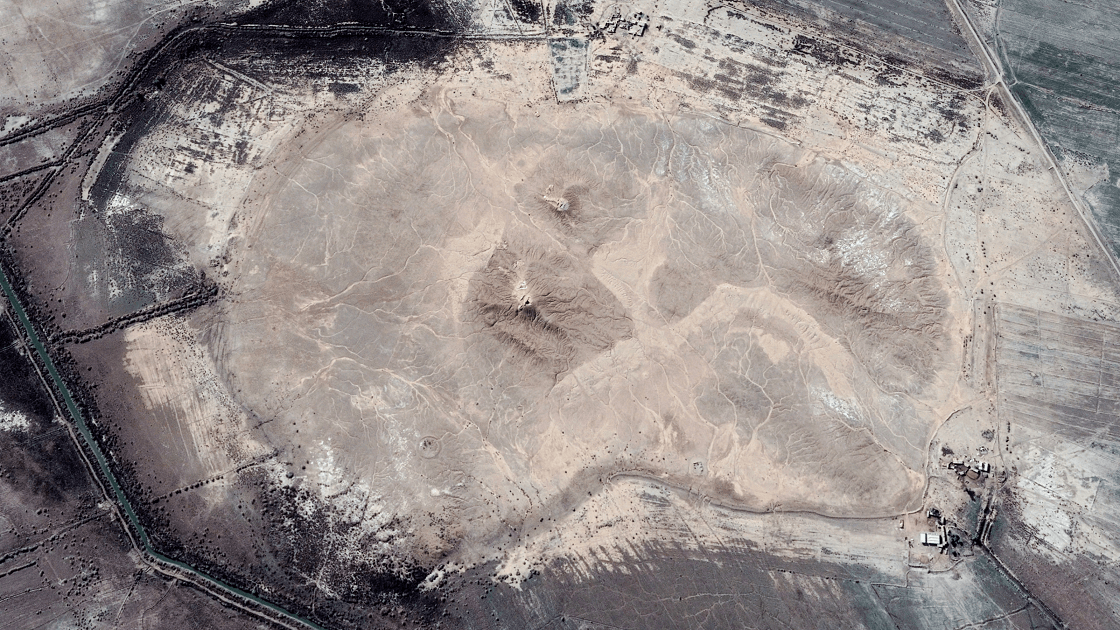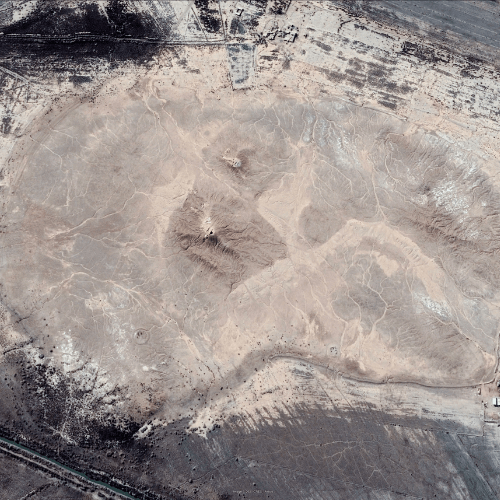
THe italian archeological expedition to
Tell Zurghul,
ancient nigin
The Italian Archaeological Expedition
The Italian
Archaeological Expedition
The Italian Archaeological Expedition to Tell Zurghul is a join project between Sapienza University of Rome and Perugia University, co-directed by Davide Nadali and Andrea Polcaro. The site is a settlement of about 70 hectares, characterized by two principal mounds, called Mound A and Mound B. The first one, reaching actually a height of about 15 meters, is located in the center of the site and corresponds to the main occupational phases of the acropolis of ancient Nigin. The second one, reaching nowadays a height of 5 meters, is located 160 meters south-west from Mound A. Both mounds still show the signs of the two deep excavation trenches operated by Robert Koldewey in 1887. The site of Tell Zurghul was already identified as Nigin, one of the three main cities of the ancient Sumerian State of Lagash, corresponding to Tell el-Hiba (located just 7 kilometers to northwest), by the first excavations and surveys operated at the site in the past centuries. Several cuneiform sources of the First and Second dynasties of Lagash describe the ancient city of Nigin referring to the existence of many sanctuaries (the main one dedicated to the goddess Nanshe) and the canal of the Sumerian state, coming from Tello and reaching the sea to the South. The first excavations of the Italian Archaeological Expedition in 2015 showed that the history of site is more ancient and dates back to the V millennium BC, in the Ubaid Period, with an imposing and large settlement in the IV millennium BC in the Late Uruk Period.
History of expeditions
History of expeditions
Tell Zurghul was first noted by E. De Sarzec, who in his Decouvertes en Chaldée (1844) gives a brief description of the ruins and hills of the site. The site was then visited by W. H. Ward in 1885: he described the main hill in a more accurate way, which he interpreted as a ziqqurat, since the still visible line of a platform near the top of the mound. He also described the second mound, a large cemetery area and few objects bought from the local people. In 1887 R. Koldewey made two months of excavations at the site performing two narrow and long trenches on the top and on one side of Mound A and Mound B, registering a total lack of backed bricks and some objects of several periods, together with enigmatic, probably late, incinerated burials. Koldewey Also registered a funerary area on the northern side of the site, which he dated to the Old-Babylonian Period. In 1926 R. P. Dougherty made another survey to Tell Zurghul, registering the presence of water in the lower city of the site, typical of the marshland landscape. He also noted the cut of the larger trench operated by Koldewey, still visible on the top of the Mound A. The seasonal flooding inside the ancient settlement was already present in the 1990, when J. A. Black made the last survey to Tell Zurghul before the new Italian Excavations of 2015.
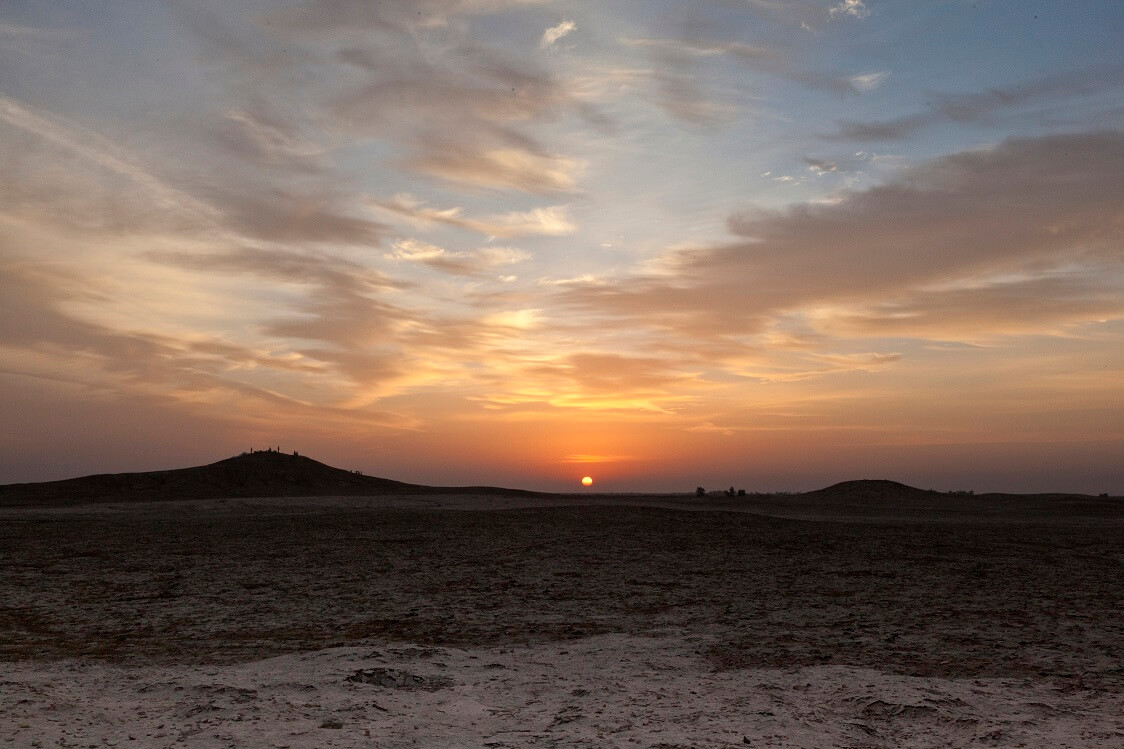
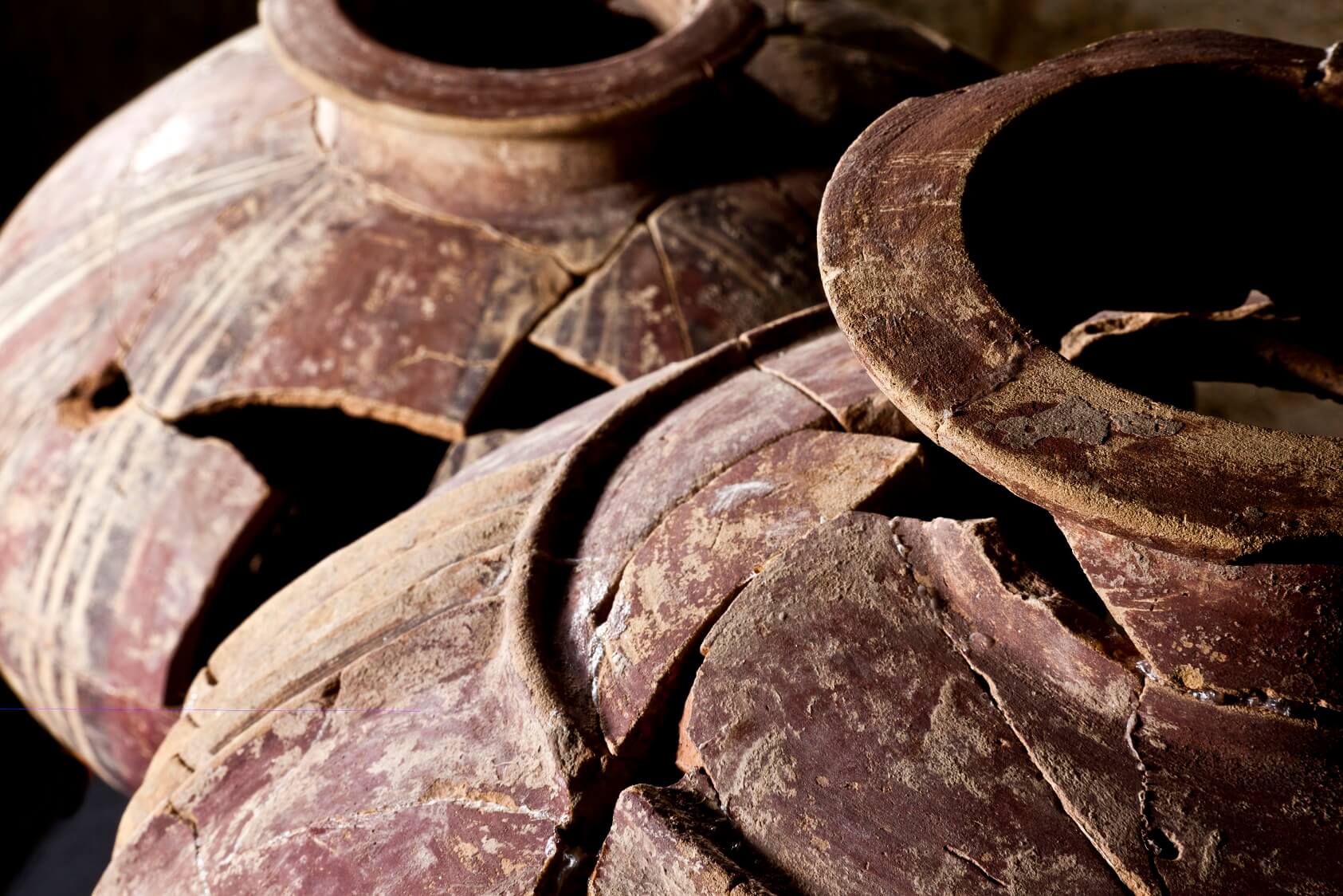
History of Nigin
History of Nigin
The ancient settlement of Nigin was part, with the cities of Girsu and Lagash, of a political entity known as the State of Lagash. The administrative cuneiform texts and the royal inscriptions documented the existence of at least two dynasties of Lagash. The first one, dated to the half of the Third Millennium BC, had a long and documented history. Events of the city of Lagash tells of the long lasting fight with the neighbouring city of Umma: the Stele of the Vultures of King Eannatum is the most eminent visual monuments that records a a moment of the war between the two cities. Then, both cities together as well as the whole Southern Mesopotamia fall under the rule of the Empire of Akkad. At the end of the Akkadian kingdom, Mesopotamia fall in a state of chaos partially facilitated by the presence of the Guteans, which caused the collapse of Akkad, but did not keep the political unity of the territory. Facilitated by this historical situation the State of Lagash restored his independence under a dynasty of “governors” (ensi), Gudea (II dynasty of Lagash) is the most famous and well known. But this dynasty had a brief life and the cities of the State of Lagash fall under the control of a new state ruled by a dynasty of the city of Ur (III Dynasty of Ur). At the end of the Third Millennium BC the three cities of Girsu, Lagash and Nigin were destroyed as a consequence of the fall of the kingdom of the III Dynasty of Ur. Few documents of the Old-Babylonian Period testify the slow decline and abandonment of these settlements. The influence of the State of Lagash tradition goes beyond the Sumerian culture of the Third Millennium, leaving its traces in the following civilizations of Mesopotamia.
Choose an area
MOUND A
AREA D, AREA E
2015
Area A is located in the centre area of the site, south of Mound A, the higher elevation of the ancient Nigin. Here a trench, 5 x 5 m (Fig. 1), has been opened to clarify the archaeological evidence of some white gypsum bricks clearly visible on the surface due to the rain. Here two mud bricks walls (W.4, W.18) have been detected forming a corner of a room (L.20) full of flower pots (Fig. 2), some bevelled rim bowls, fragments of spouted jars and other typical pottery materials to be dated to the Late Uruk (Late Chalcolithic 5).
2016
In 2016 campaign (10 October – 1 December) Area A has been enlarged with a new U-shaped trench (5 m to the north, 5 m to the east, and 5 m to the west). In the new operation, several layers have been recognized, dating from the Late Uruk to the Early Dynastic I periods. In the main phase, dated to the Jemdet Nasr Period thanks to the typical reserved red slip and red painted pottery discovered in situ on the floor, part of a large building has been investigated (Fig. 3). Since now, three rooms of the building have been excavated; in this phase, the structure had its main large entrance on the western side (W. 105). The pottery dated to the Jemdet Nasr Period was located between room L. 108 and room L. 131, and consists of at least four large jars found broken on the white plastered floors of the two rooms and in the space of the door between them (fig. 4). The main external door of the building led to an open area on the western side. Here, different earthern floors have been identified, dated to earlier phases of the same Jemdet Nasr Period and characterized by the presence of a circular oven (tannur) (fig. 5). In this layer, probably connected to the main kiln, almost forty complete conical bowls have been recovered (Fig. 6). Probably in the same late phase of the main building, at least three fire places have been identified in this open air area, testifying the continuity of use of this sector of the settlement for cooking activities and food production.
Further excavations will be extended farther to the north and east, in order to identify the extension and possibly the limits of the building that seems it had been reused in the Early Dynastic Period; moreover, the structure seems to be more preserved to the north-east as far as it get close to Mound A.

MOUND B
AREA B

2015
Area B is located on the western side of the Mound B, the second hill of the site that was already investigated by R. Koldewey in 1887. Here a trench (10 x 5 m) has been opened. Several parts of mud bricks walls have been identified as belonging to at least two different occupational phases (Phases II and III), all to be dated to the Ubaid 4 Period (according to the pottery materials found in the different strata and on the floors).
The most important discovery of the season, related to the earliest architectural phase, is the recovery of at least five ‘censers’ (peculiar pottery vessels similar to stands) in situ, voluntarily placed below some wall structures. These objects, dated to the Ubaid 4 Period, had good parallels with the ‘censers’ discovered in the Temple VI of Eridu.
Moreover, a surface layer composed of “greenish” mudbricks have been identified (W. 29). These mudbricks probably constitute a platform for raising the architectural structure built above it.
2017
In 2017 season the excavations area was enlarged. On the southern sector, the excavations clarified the situation exposed in the 2015 campaign. A small, rectangular room immediately below the surface was identified. The structure was very eroded, but it represents the most recent architectural phase recovered so far at the top of the mound (Phase I). In addition, the architectural layouts of the walls identified in 2015 (belonging to Phase II and III) were better clarified. Phase II is composed of two architectural sub-phases, the oldest one characterised by a rectangular room west of W. 264 with a hearth in one of its corners. Remains of a more ancient architectural phase (Phase III) were also identified, with two further sub-phases. On the floor of L. 278, two other complete ‘censers’ similar to the ones identified in 2015 season and comparable to the specimens from Eridu Temple VI were recovered.
On the northern side of the new trench architectural remains belonging to Phase III were also identified. Inside the area, three small rooms delimited by narrow mudbricks wall, and two platforms of clay and mudbricks were identified. Within the rooms, a filling layer with several bones pertaining to different kind of fishes, river and sea shells, clay weights for fish-nets and clay sickles have been discovered. The findings permit to hypothesise an annex building related to frequent fishing activities and storage of fishes.
2019
The 2019 excavations were concentrated on the top of Mound B, comprising the northern portion of the Koldewey’s pit, with the aim of continuing the exposure of the upper phases already recovered during the previous campaigns.
Part of the excavation focused on recognising the limits of the Koldewey’s pit and excavating its filling, composed of incoherent soil with broken and complete baked bricks, stones of large dimensions, and some pottery sherds with a chronological range from the Late Ubaid to the Ur III period. Within the filling of the pit, some inscribed baked bricks (one of them dated to Entemena of Lagash), and an Early Dynastic votive plaque, together with fragments of stone vessels have been found.
The excavations then moved northwards, in the area not disturbed by the Koldewey’s excavations. The most important discovery was the identification of walls and floors pertaining to Phase II b. It was therefore possible to obtain a complete planimetry of the structures of Phase II b identified in the previous campaign. A stamp seal with a geometric design and the remains of an ophidian figurine (unfortunately, partially broken) were identified. Moreover, floor L. 364 was identified with a lot of in situ pottery materials.
Architectural remains of Phase III buildings were identified as well, with further fish bones on the filling layers and on the floors.
2021
In 2021, a “step trench” operation has been opened in the north-western slope of mound B, with the aim of identifying the occupational phases of the mound that precede the ones identified in the campaign 2015-2019. The area was opened immediately behind the north-western limit of 2019 excavation area, and the excavated trench was 3 m wide and more than 20 m long. The methodology used in the excavation is as follows: from top to bottom, the most recent archaeological phase is exposed. Once its extent and limits have been identified, the cut for the next step of the trench is made slightly beyond the identified structure. In this way all identified structures are left in place.
In the operations, four steps in the trench have been opened, and five occupational phases have been identified. Immediately below the surface, a surface made of “greenish” mudbricks have been identified (L.380), similar to the ones identified in 2015 (W.29). They probably belong to a platform for raising the latest phases (from phase 3 onwards).
From the second to the fourth step, several architectural structures were identified, unfortunately all emptied in ancient times. In the second step, two perpendicular walls (one of which with a pillar on its external face) pertaining to two rooms, were exposed. In the third step two overlapping walls have been exposed, with the earliest one built immediately above but slightly recessed respect to the oldest one. Step four was characterised by two further walls: a partition wall (W. 387) with a door opening, and a closing wall (W. 388) running south-west to north-east and characterized by small mudbricks clearly visible on its southern face.
All the buildings identified presents “Ubaid” pottery which helps in dating them to the Middle Chalcolithic period. However, all the structures have been willingly cleared out; therefore, few pottery sherds have been recovered, making a more precise dating of these structures problematic at the moment.
North of step four, a completely different situation was discovered. In this point of the trench, immediately below the surface a wall structure was recovered, with the associated layers presenting pottery materials dated to the Late Chalcolithic/Uruk period. This is the most recent architectural phase discovered so far in Mound B.
Lower Town
Area A, Area C, Area F
AREA C
2015-2016
In the 2015 and 2016 expeditions to Tell Zurghul an extended survey of the north-western sector of the settlement (denominated Area C) has been performed. The area, of around 41600 square meter (ca. 4 hectares), is characterized by some features visible on the ground. In particular, a long elevation of ca. 250 m long and 60 m wide has been registered, together with another lower mound (Fig. 1). This mound (called mound C) is characterized by a black color surface and many pottery slags have been recovered on the top. Moreover, curvilinear mud bricks walls perhaps related to kilns could suggested the presence of a late working area in this sector (Fig. 2). Mostly along the western side of the long elevation identified in this area, several drain pipes with pottery sherds dated from the Early Dynastic to the Ur III / Isin Larsa periods have been identified on the surface (Fig. 3). The proximity of the drain pipes and the number, exceeding seventy, lets to think to a large drainage system.
AREA D
2016
Area D was opened in 2016 campaign (10 October – 1 December) on the southern slope of Mound A (Fig. 1). The area, 20 x 10 m meters, aimed to identify the last phase of the Sirara high temple of the goddess Nanshe, quoted in the inscribed bricks and cones of Gudea of Lagash, discovered in the past campaign, mostly scattered at the base of the mound on its southern side [publication].
The new trench has been opened from the top of the mound, where the cut of the long and narrow trench Robert Koldewey dug in 1887 has been identified (Fig. 2). The cut (oriented north-east / south-west), one meter wide and extended for the all length of the new trench (10 m), presents at least two earth bulks (around one m wide), left by the German excavator to prevent the collapse of the long and deep narrow trench. The German excavation affected the stratigraphy of the area, specifically the mud-bricks structures that, in fact, have been partially recovered intact to the south (W. 158); it can be supposed that they belong to the last phase of occupation Mound A.
Moving to the south, the monumental base of these mud-bricks walls has been identified, clarifying the method of construction. In fact, W. 158 lies on a huge terrace of pure white compact clay (W. 155), at least 1.80 m wide, directly built on a platform that follows the circular profile of the mound (probably eroded on the edges), made of a white plaster floor, denominated L. 151 (Fig. 3). For what concerns chronology, pottery recovered on the floor of the platform can be dated to the passage between Late Akkadian and Ur III periods, so it perfectly fits in with the time of Gudea (2150-2130 BC). Moreover, on the same floor a Neosumerian clay plaque showing a bull-man holding a ring-pole has been discovered (Fig. 4). The dating of complex structure on the top of Mound A to the II dynasty of Lagash has been definitively proved by the discovery, within the pure clay of the terrace, of a stamped backed-brick, carrying the inscription of Gudea, mentioning the city of Nigin and the construction of the Sirara Temple dedicated to the goddess Nashe.
2019
The 2019 excavations in Area D were opened to the northern front of Mound A, north to the ‘Koldewey’s trench’. The top of the mound was investigated in a trench of 15 x 15 m in order to identify the possible remains of the Sirara Temple built by Gudea and well-known from cuneiform inscriptions.
In fact, many inscribed clay cones of Gudea, registering the construction of the temple by Gudea himself, have been collected on the surface of the site, especially to the South and South-East of the Main Mound. However, considering that the cones were originally inserted into the masonry of the walls of the temple, the mudbricks of the temple structure have possibly been heavily affected by the destruction of the city at the end of the 3rd millennium BC.
The excavations aimed to verify this hypothesis. During the works several horizontal layers composed of debris, broken mudbricks, and lots of pottery vessels (mostly found upside-down) and sherds were identified, possibly testifying for intense destruction. Remains of the Temple were not yet identified and considering the inscribed clay cones it is possible that the mudbrick walls of the Temple, where the cones were once inserted into, totally collapsed.
The excavations reached also other important results: in particular, the excavation shed some new light on the events occurred at the very end of the III millennium BC and it helped in the definition of a pottery chronology for this time period.
AREA E
2019
Excavations in Area E were started in 2019 immediately below Area D of 2016, along the south-western slope of Mound A. The aim was to detect the occupational nature and sequence of the mound, investigating the morphology of the mound in connection with the northernmost Area D of 2016 and the southernmost Area A excavated in 2015, 2016 and 2017 seasons.
Already in the excavations carried out by Koldewey through its trench, some materials were possibly dated to the ED III and to the Akkadian period. The excavations wanted to therefore investigate the occupational phases of the mound before the construction of the Sirara Temple.
The area was 15 x 20 m. The works identified a huge wall structure (W. 458) delimitating a possibly open area characterised by one circular kiln and several hearths (L. 456). From this area, a large number of fish and animal bones, matt impressions, medium sized storage jars, and bowls were recovered, possibly pointing to a use of the area as a kitchen.
The materials recovered actually point to a date around the Early Akkadian period, testifying the presence of earlier phases below the Sirara Temple constructed by Gudea of Lagash.
AREA F
2019
Area F is located in the lower city of the site, not far from the main mounds toward West. This area was first investigated in the 2021 season. The choice for exploring this area was dictated by a series of orthophotos generated by drone mapping in 2017. The 2017 team took the drone photos after a rainy day, and a pattern of light rectilinear traces was clearly visible to the West of Mound A. These light traces might have been evidence of structures located immediately underneath the surface. During the 2021 excavation season, as a starting point for investigating these traces, an area of 30×100m was delimited. This area was then subdivided into 10x10m squares to be investigated archaeologically through a surface scraping.
We managed to investigate six of these squares during this season. Some walled structures were brought to light, associated with archaeological materials dating to the III Millennium BC. We also found evidence of the so-called pottery “drains” in a couple of squares. Their presence is very interesting, and it needs further investigation, as these drains dot the surface between areas F and C. However, the main finding of the 2021 season was the presence of some cooking installations. These areas consisted of pottery “kilns”, inside which we found a high number of animal bones of different species. While research on the specific food that was processed in this area is still ongoing, a peculiar find was a complete decorated jar that was clearly intended to be used in the cooking process. This find is very relevant because decorated pottery is usually interpreted as a fine, almost luxurious type of ceramic. Our finds suggest that decorated pottery could have a more down-to-earth function related to the daily productive activities of local communities of the III millennium BC. The data coming from the excavation are crucial to better understand the daily life of ancient communities and also the characteristics of their diet and food preparation and consumption. The archaeological investigations of the area will be resumed by the Italian team in the next 2022 season.

NEWS
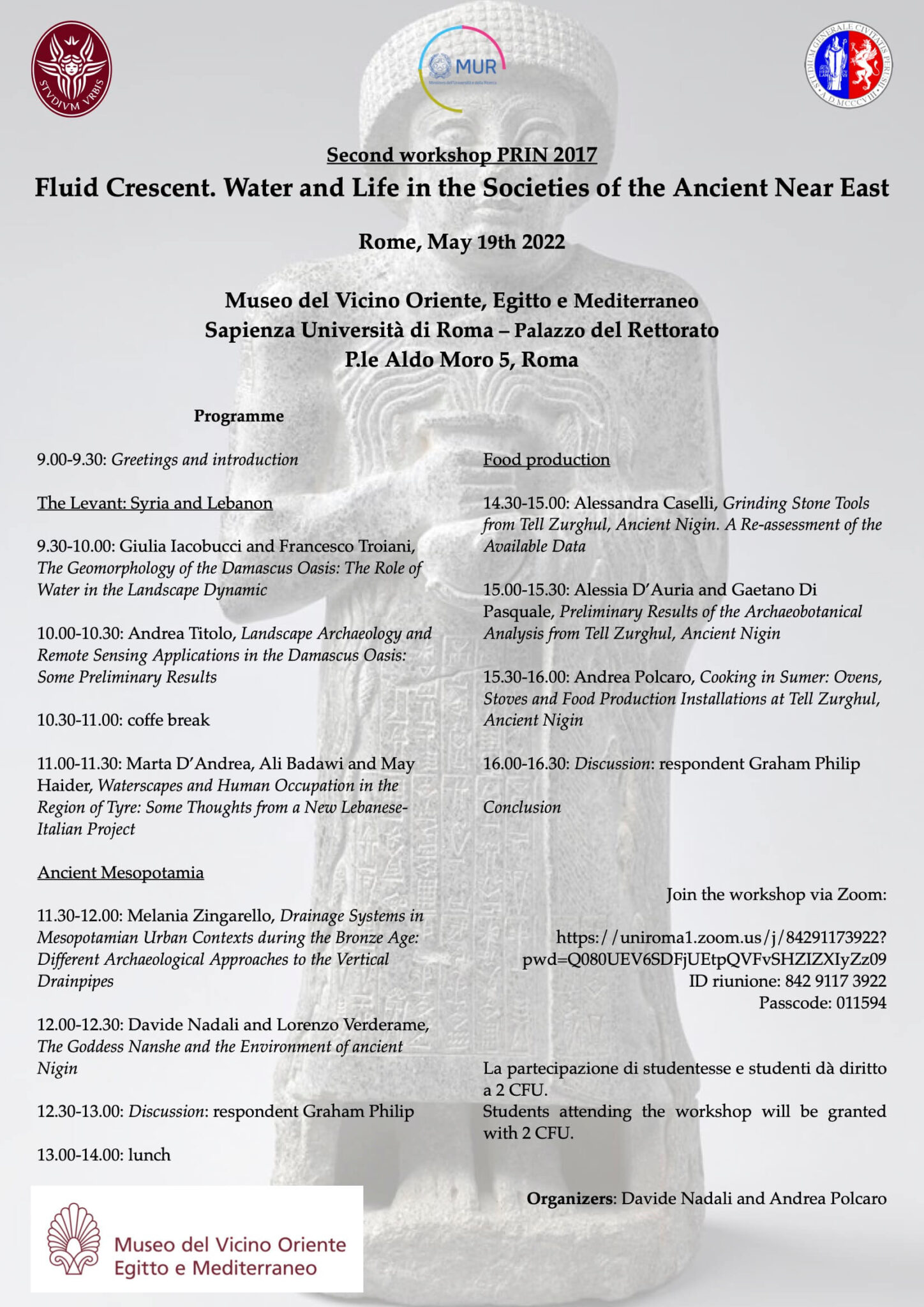
Second Workshop PRIN 2017: Fluid Crescent. Water and life in the societies of the Ancient Near Est. Rome May 19th 2022, Museo del vicino Oriente, Egitto e Mediterraneo. Sapienza Università di Roma – Palazzo del rettorato. P.le Aldo Moro 5, Roma
The second Workshop PRIN 2017 will take place on May 19th at the Museo del vicino Oriente, Egitto e Mediterraneo. Sapienza Università di Roma – Palazzo del rettorato. P.le Aldo Moro 5, Roma.
Publications

Davide Nadali and Andrea Polcaro, 2020, Italian Archaeological Expedition to Nigin, Southern Iraq: New Results from Recent Excavations
Tell Zurghul, the ancient Sumerian Nigin in the ancient State of Lagash, is currently excavated by a joint Italian archaeological expedition of Sapienza University of Rome and University of Perugia since 2014. The paper presents the results of the most recent excavation campaigns carried out in 2016 and 2017 covering three areas (A, B, and D) in the central region of the site and a survey carried out along the western edge of the city (Area C). Recent agreements with the Department of Geology of both Perugia and Rome aimed at the study of the hydro-geological morphology of the site with special focus on the investigation of the areas once covered by water, i.e. the presence of marshes and canals, as the same Gudea of Lagash mentions in his inscriptions. Furthermore, the study also encompasses the analysis of the ancient shape of the city across time, from the Ubaid to the late third/beginning of the second Millennium BC.
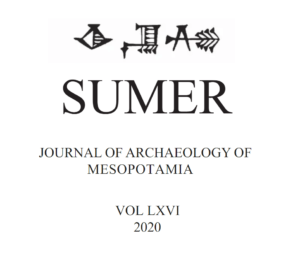
Davide Nadali and Andrea Polcaro, 2020, Preliminary Report on the Third Season of Excavations at Tell Zurghul, ancient Nigin, Iraq
The paper is based on the results of the third excavation campaign carried out in 2017, covering areas A and B in the central region of the site. In particular, it preliminarily presents the architectural features and findings from current excavations: Area B, on the top of Mound B, and Area A, at the southern base of Mound A. The excavations of the Italian Archaeological Expedition showed that the site was first settled during the Ubaid Period; evidence from the Late Uruk, Jemdet Nasr, and Early Dynastic I periods has also been discovered in the Lower City, while on the top of Mound A, evidence of remains of the la phase of occupation of the city dated to the Neo-Sumerian Period (Gudea’skingdom) is registered.

Davide Nadali and Andrea Polcaro, 2020, Italian Archaeological Expedition to Nigin, Southern Iraq: New Results from Recent Excavations
Tell Zurghul, the ancient Sumerian Nigin in the ancient State of Lagash, is currently excavated by a joint Italian archaeological expedition of Sapienza University of Rome and University of Perugia since 2014. The paper presents the results of the most recent excavation campaigns carried out in 2016 and 2017 covering three areas (A, B, and D) in the central region of the site and a survey carried out along the western edge of the city (Area C). Recent agreements with the Department of Geology of both Perugia and Rome aimed at the study of the hydro-geological morphology of the site with special focus on the investigation of the areas once covered by water, i.e. the presence of marshes and canals, as the same Gudea of Lagash mentions in his inscriptions. Furthermore, the study also encompasses the analysis of the ancient shape of the city across time, from the Ubaid to the late third/beginning of the second Millennium BC.
The team
Andrea Polcaro
Andrea Polcaro, co-director of the expedition, is Researcher (RtD, Type-B) at Perugia University in Italy. He was first PhD student at Rome Sapienza University (2003-2006), and then contract professor in Near Eastern Archaeology (2008-2013), not-fixed term researcher (Type-A) (2013-2016) and research fellow (2018-2020) at Perugia University. He participated to several archaeological expeditions in the Near East, as such as in Ebla /Tell Mardikh (Syria), and he is since 2012 to date co-director of the Italian-Spanish Archaeological Expedition to Jebel al-Mutawwaq (Jordan) and scientific director of the “Discovering Madaba” project (Jordan) funded by the Italian Agency for Development Cooperation (AICS) and implemented by Perugia University.
Davide Nadali
Davide Nadali is associate professor in Near Eastern Archaeology at the Department of Ancient World Studies, Sapienza University of Rome. He received the PhD in Near Eastern Archaeology at Sapienza University of Rome in 2006. From 2008 to 2010, he has been postdoctoral fellow at the Istituto Italiano di Scienze Umane in Florence.
In 2019, he has been appointed as vice-director of Italian Archaeological Expedition to Syria, being part of the Ebla Project for the study and promotion of Ebla culture, language and archaeology.
Since 2014, he co-directs the Italian archaeological excavations at Tell Zurghul, ancient Nigin, in southern Iraq.
Sara Pizzimenti
Supervisor Area A
Luca Volpi
Supervisors Area B
Daniele Redamante
Francesco Tessa Montana
Sarah Della Giustina
Assyriologist, Sapienza Università di Roma
Carlo Baione
Topographer
Melania Zingarello
Supervisor Area C
Valentina Oselini
Supervisor Area C
Andrea Titolo
Supervisor Area C
Eloisa Casadei
Supervisors Area B
Loay Reissan Humood
Representatives of the SBAH
Akram Arkan Abd el-‘Aziz
Representatives of the SBAH
Ghazwan Majid
Representatives of the SBAH
Sarah Della Giustina
Topographer
Francesco Prezioso
Photographer
Agnese Vacca
Supervisor Area B
Alessandro Moriconi
Luca Volpi
Supervisors Area B
Alessandra Caselli
Supervisors Area B
Andrea Titolo
Supervisor Area B
Lorenzo Verderame
Assyriologist, Sapienza Università di Roma
Reed Goodman
Sara Quaggio
Michele Barzotti
Martina Pignattini
Valeria Mattei
Credits
For the support the Archaeological Expedition to Nigin wishes to thank:

